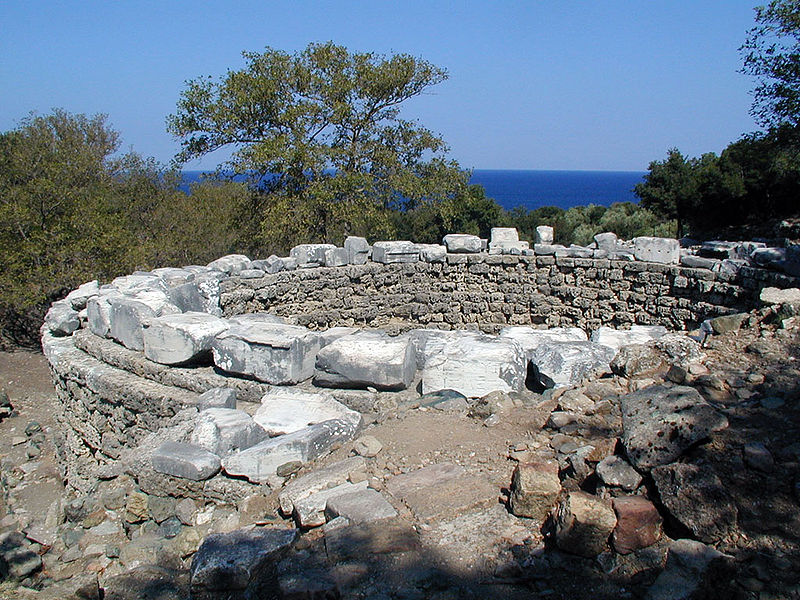The island of Samothrace in the north Aegean Sea is known for its wild, virgin natural beauty. Mt. Saos highest peak, called Fengari (the moon, in Greek) with its 1.611 meters (5.285 feet) is the second highest peak of the Aegean, second only to Psiloritis on Crete and is often covered with snow in winter months. Poseidon watched the Trojan War seated on this high peak, as Homer mentions. Mt. Saos, once an active volcano, has been recently included in the European Mountaineering Path. It is rare to find any other Greek island which combines so many water springs, is rich in flora, with plane trees, oaks, olives, scent of oregano and thyme, hundreds of goats grazing wild, clean desert shores with cliffs, sea caves, streams, waterfalls and dramatic volcanic scenery at the same time. Samothrace has recently received the International Quality Coast Gold Award for 2012, among 100 destinations worldwide, for its efforts to achieve good standards in sustainable tourism and for excellence in the categories of nature and identity.


Paliapolis, one of the most beautiful and important archaeological sites of Greece, is located where the ancient capital and once the main seaport of the island used to be, on the northern coast. As a mystical centre in antiquity, it attracted thousands of pilgrims, among them famous personalities, who came to be initiated to the Mysteries of Kabeiroi in order to ensure a happy life after death. It was the island’s famed religious centre for centuries, where the ruins of the ancient city and of the Sanctuary of Great Gods survive in a Delphic landscape with plane-trees and oleanders. The visitor can also see some of the finds, discovered by French, Austrian, American and Greeks in a period of almost 150 years’ excavations, at the site’s small Museum. The most famous discovery was the renowned statue of Nike of Samothrace – the winged Victory goddess – kept in the Louvre Museum since 1863.
The island’s modern port and biggest settlement is Kamariotissa. The capital town is Chora, a traditional listed under protection settlement, built on the mountain slope in the 15th century like an amphitheatre, at an altitude of 300 m., between the slopes of Mt. Saos. It has two-storey stone houses with tiled roofs, paved squares and beautiful cobbled roads, free of cars. There, the Church of the Assumption of the Virgin Mary (1875), the Folklore Museum and the ruins of the medieval Castle, constructed by the Genovese Gattilusi family around 1400.

With its 999 chapels and churches, the island’s religious festivals attract many visitors from the mainland, reviving the local customs, with traditional music, dances and gastronomy. Not to be missed, is the delicious Samothracian goat, cooked in many different ways in the tavernas all over the island and the fresh fish brought by the boats to Kamariotissa port every morning.

Licensed Tourist Guide
& Conservator of Antiquities
Author of travel guide book
“Samothrace, History-Archaeology-Touring”


A picturesque view of the Hieron

Foundation of the Arsinoé Rotunda and fragment of the dedication (site plan number 15)


Δεν υπάρχουν σχόλια:
Δημοσίευση σχολίου